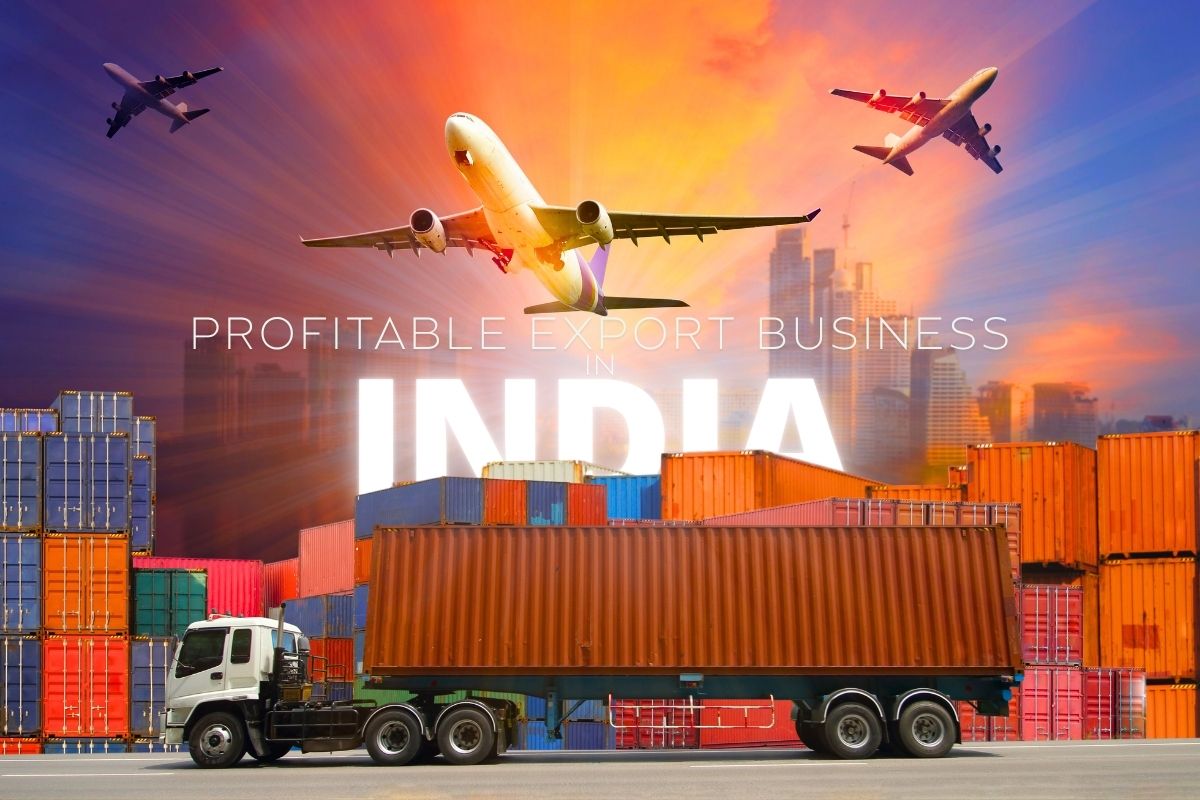India has always been a land of traders. From ancient caravan routes to today’s busy ports, selling to the world is part of what we do. But not all exports make the same kind of money. Some lines are just better bets.
If you’re wondering what businesses really work when it comes to exports, here’s a proper look at what brings in good margins for Indian exporters. We will be sharing with you the most profitable business ideas in India for the year 2025 in this article.
Textiles and Garments
Let’s start with an industry everyone knows. Textiles are India’s backbone when it comes to exports. Cotton shirts, silk sarees, denim jeans—you name it, they’re shipped out in huge quantities.
Exports of textiles and clothing alone were worth about USD 16 billion in 2024–25, making up nearly 4% of India’s total merchandise exports. It’s not the biggest sector by percentage, but it’s a vital one, supporting millions of jobs.
Why is it profitable?
- Raw materials are often sourced locally at decent rates.
- Labour is skilled but costs less than in many other countries.
- On top of that, India has a rich tradition of design and craftsmanship.
Foreign buyers like quality, but they also want reliable delivery. Exporters who can guarantee that get repeat orders. That’s how profits keep flowing.
Pharmaceuticals
Call it India’s quiet success story. Pharma exports are massive. Indian firms supply generic medicines to Africa, Latin America, parts of Asia, and even Europe.
In 2024–25, India’s pharma exports hit around USD 30.5 billion, about 7% of all merchandise exports. That is big business by any standard.
What’s the big draw?
- We make safe, effective drugs at a fraction of the cost of Western brands.
- Plus, the government has given support to boost this sector.
Setting up takes proper approvals and care about quality, but once you’re in, the profit margins are solid because global demand for affordable healthcare isn’t going anywhere.
Gems and Jewellery
This one’s glamorous but also serious business.
India is famous for diamond cutting and polishing. Surat alone handles a huge chunk of the world’s diamonds. Then there’s gold jewellery, which has buyers everywhere.
The gems and jewellery sector contributed around USD 35–36 billion in exports last year, making up close to 8–9% of the total.
Why does it pay?
- High value in small packages means better margins.
- Buyers love the artistry and trust Indian craftsmanship.
- And even in tough times, people still buy gold—it’s seen as a safe investment worldwide.
Of course, it’s competitive. But for those who know the trade, it can be very rewarding.
Spices
If there’s one thing India is known for worldwide, it’s spices.
Black pepper, cardamom, turmeric, chilli, cumin—the list goes on. Spices may not be the biggest export sector, but it’s solid, clocking over USD 4 billion in 2024–25.
Why is it such a money-spinner?
- Different regions grow different spices.
- Buyers want authentic stuff from India.
- There’s always demand, whether it’s bulk for food companies or fancy branded packets for supermarkets.
Margins can be very decent, especially for organic or speciality lines. If you keep quality up and meet safety standards, you can build a strong export business with steady orders.
Handicrafts and Home Décor
This is one of those charming sectors that people often overlook.
From carved wooden furniture to brass lamps, rugs, pottery, and embroidered fabrics—there’s no end to what India produces by hand. Exports in this sector were about USD 3–4 billion last year.
Why does it work?
- Buyers abroad love authentic, handmade products.
- Each piece is unique.
- Labour costs make it possible to price these well and still have a good margin.
With online selling, even small exporters can find international customers. It’s no longer just about giant containers—smaller, frequent orders are now a big part of the trade.
Leather Goods
India’s leather exports are well known.
Shoes, bags, wallets, and belts—they all head to markets in Europe, the US, and the Middle East. The sector brought in about USD 5-6 billion in 2024–25.
Why is it profitable?
- Quality leather is available locally.
- Talented artisans turn out chic designs at great prices.
- International buyers are aware of this and keep returning.
There is also a nascent market for eco-friendly leather production, which Indian exporters can charge a premium for if they can prove their methods are environmentally friendly.
Tea and Coffee
India has made a name here as well. Teas from Darjeeling, Assam, Nilgiri have admirers around the world. South Indian coffee enjoys a great reputation. Tea exports stood at approximately USD 920 million and coffee at about USD 1.8 billion in 2024–25.
Why is it worth exporting?
- Buyers want authentic origin.
- They’re willing to fork over more money for nicely packaged, branded tea and coffee.
- Bulk sales to large companies generate another layer of profit.
Margins are strong, if quality and narrative can be kept up.
Agricultural Produce
Rice (particularly Basmati), pulses, fruits, vegetables are India’s primary exports. India is an agricultural powerhouse and it manifests in the exports.
During 2024–25, the rice exports alone were to the tune of USD 12.5 billion and the total agri exports were over USD 25.14 billion, comprising about 10–15% of the total merchandise exports.
Why does it bring profits?
- We can grow at scale.
- Gulf countries, Europe, North America—everyone needs food imports.
Margins can vary, yes. But if you can control quality and ensure timely shipping, you can build a very reliable business. Governments often support these exports too.
Chemicals and Dyes
Not the flashiest sector but a big earner.
India supplies chemicals and dyes used in textiles, paints, and other industries worldwide. India’s exports of chemicals and dyes were estimated at USD 15–20 billion in 2024–25, making up about 13–14% of total merchandise exports.
Why is it profitable?
- Competitive production costs.
- Demand from manufacturers who need consistent supply.
Exporters who stick to safety and environmental rules can get into lucrative markets.
IT Services
Worth mentioning even though it’s not a physical export.
Software development, support services, consultancy—India’s IT exports are massive. In 2024–25, IT services alone brought in about USD 120–150 billion, making up over 11% of total services exports.
Why does it make money?
- Skilled workforce.
- Competitive pricing.
- Reputation for quality.
Clients in the US, Europe, and Australia—they all want reliable partners, and India has built trust over decades.
How to Make It Work
No matter what you choose to export, some rules are the same:
- Deliver on time.
- Keep quality consistent.
- Build relationships with buyers.
- Follow packaging and safety rules of target countries.
- Be ready to adjust to changing demand.
Final Thoughts
There’s no single “best” export business in India. The most profitable one is the one you know, can source reliably, and can sell confidently.
Some people do well in spices. Others in garments. Some carve out a niche in handicrafts or pharma.
The key is to start with what you know, learn the market, and keep improving. That’s how small traders have grown into big exporters for generations.
India has the resources, the skill, and the demand worldwide. If you do it right, export can be one of the most rewarding businesses you’ll ever run.











